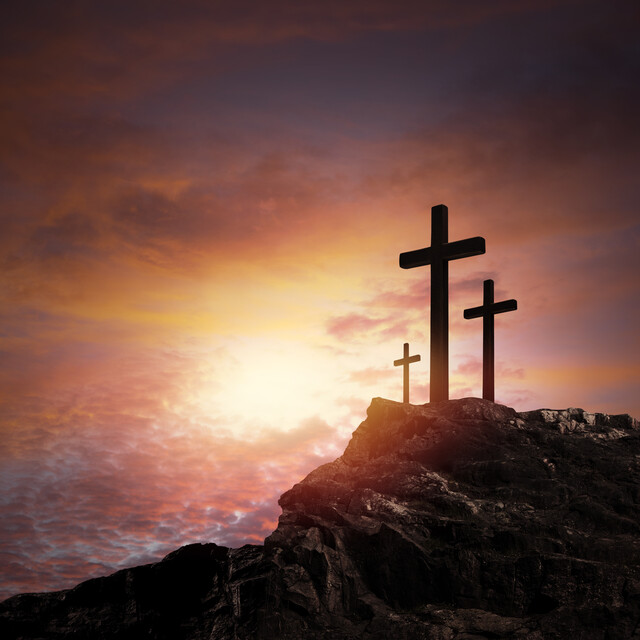Spanish Culture: Past and Present
The Spain of today is not the Spain of yesterday, but then again, what country is? As in just about every country around the World, changing times and advanced technologies have brought changes to the Spanish landscape and culture. In this article, we'll offer a brief comparison of the changes that have helped to shape modern Spain. Business travelers and those traveling for leisure should be aware of such changes in any country they visit in order to more fully immerse themselves into current cultures, behaviors and expectations of individuals in business and casual environments.
Changing Values
The values, traditions, and expectations of Spanish citizens through the generations have changed, depending on its leaders. Through the centuries (and under Spanish leader Franco from the 1940s through the 1960s), Spain was considered extremely conservative. During Franco's rule, both church regulations and public law enforced a strict social preservation of traditionalism. Spain of the past recognized a separation of the sexes and severe control over public expression, social institutions, and the media.
Today, visitors to Spain find an extreme variety of belief systems, behaviors, and cultural awareness throughout the country, depending on region and a person's age. In recent decades, tourism to Spain has also brought heavy influence from visitors around the World. Today, Spain is an extremely laid-back country that can be called a live and let live society.
Since the 1970s, censorship in Spain has been relaxed. Today, sexual freedom is embraced. For good or bad, visitors to Spain may note more uncensored sex films and sexually explicit content on television than ever before. Prostitutes and brothels, as mentioned before, are advertised in newspapers across the country. In spite of this, there is a lack of sexual education and education regarding contraception, as well as a rising number of abortions, prevalent throughout Spanish society.Yet, since the 1980s, public opinion in Spain is still opposed to "abortion on demand".
However, as in many countries around the world, one of the greatest changes in values and culture in Spain today is the increasing position and role of women in society. Today, increasing numbers of women are found in the workplace. More women are graduating from Spanish universities. Since Franco's time, women no longer need a husband's approval to work, to own property, or to travel. Divorce was legalized in Spain in the early 1980s.
Today, one of the most prevalent signs of cultural change within Spain is the size of the family unit. Actual marriage rates have declined since the mid-1970s and households are much smaller. More couples today either have no children or no more than two children. Instances of two or three generational families living in the same household have decreased steadily through the years.
The family unit of today is not the same as the family unit of yesterday. Such changes are not only prevalent in Spain, but also in other Latin American countries. Nevertheless, the existing family unit is still strong, and many families are incredibly linked to one another, both personally and socially. Family loyalty is as important to Spaniards today as it was generations ago.
King Juan Carlos
Today, Spain is a multi-party system that still supports the royal family of Spain, led by King Juan Carlos. King Juan Carlos serves more as a figurehead and a symbol for Spain, but holds little, if any, political power.
Today's Spanish political landscape is divided into two main legislative bodies, members of which are elected every four or five years. The lower house is called the Cortes and upper house is called the Senado. The political party that holds the majority in the lower house controls government. If there is no majority, the party with the most seats governs in minority with legislative support of a different party.
The three major political parties in today's Spain include:
- PSOE (Spanish Socialists).
- PP (Popular Party).
- IU (United Left).
Just over two dozen smaller parties led to the disbanding of the UCD in the early 1980s. Today, the Spanish Socialist Workers Party (PSOE) is a major contender in most elections and supports Spain's competitiveness in the international market place. The Popular Party is much more conservative, with more leanings to the right, while the PSOE has leanings to the left.
Another popular party in Spain, the United Left (IU), is a combination of a coalition of left-wing parties and the Spanish Communist Party (PCE). The Basque Nationalist Party and the Convergence and Union Party also provide some influence in regional-based areas and autonomous communities in the Catalonia and Basque regions.
Widespread Spanish protests in 2011 and into 2012 (also referred to as the Indignant Movement or 15-M Movement) continue to fight in protest for changes in Spanish politics. The global economic crisis has led to such movements throughout the World. Protests against welfare cuts, unemployment, Spain's current two-party system (Spanish Socialist Workers Party and the People's party) and against political corruption, capitalism, and Spanish politicians have gained favor.
Time will tell how the political landscape of Spain will change in coming years. Nevertheless, it can be expected that continued clashes between governments and its peoples throughout the economic crisis will continue, in Spain and abroad.
Conclusion
Madrid
Madrid is the capital of Spain. It's also one of the oldest yet most eclectic cities in the World. Madrid is filled with culture as well as excitement. There is literally something in Madrid that will attract young and old alike. Whether you're looking for culture, activities, or nightclubs, Madrid has it all.
Madrid is a cosmopolitan city and is the economic, administrative and financial center of Spain. The city offers vast artistic and cultural legacies and heritage. Whether you're visiting Madrid for business or pleasure, you'll find a pleasing blend of old and new, past and present throughout her streets.
Travelers who prefer indoor venues will find plenty to do at the National Anthropology Museum or the National Archaeological Museum. Goya's Pantheon and the San Fernando Royal Academy of Fine Arts Museumor the National Science and Technology Museum and these will keep you occupied for many hours.
Couples and families may prefer outdoor beauty, such as that found at the Casa de Campo Park or the El Pardo Royal Palace Gardens. TheRoyal Botanical Garden and the La Quinta Palace Gardens are beautiful nearly year-round, and offer a wonderful opportunity to rest, relax, and people-watch.
Barcelona, nestled along the western shores of the Mediterranean, is also a modern and cosmopolitan city, but one rich in history. Visitors to Barcelona can roam among Roman remains, medieval quarters, and 20th century architecture. Barcelona is home to several World Heritage Sites, including architectural wonders by Catalan architects Gaud and Montaner.
Like Madrid, Barcelona offers a variety of parks and gardens, museums, monuments, and other entertainments. The younger crowd may enjoy its casinos and beaches. Spanish architecture is at its finest in Barcelona, and visitors to the area shouldn't pass up the opportunity to visit the Picasso Museum or the Barcelona Museum of Contemporary Art.
The Casa Calvet House, designed by Gaud, is a beautiful example of 19th century architecture. The Roman necropolis contains 95 tombs that date back to the second and third centuries.
Barcelona's city park (Ciudadela Park) has long been a favorite strolling ground for Barcelona's citizens, designed in 1870. Of course, theBarcelona Botanical Gardens are always a pleasant destination for those seeking a slower paced introduction into Barcelona's beauty.
One cannot visit Barcelona without visiting at least one beach. You have plenty to choose from, from La Barceloneta beach to Playa del Paseo Martimo and La Mar Bella, each offering plentiful and beautiful stretches of beachfront, glistening and warm Mediterranean waters, and easy access.
Seville is one of the oldest cities in Spain, and one of the most beautiful. Seville is rich in the heritage of the Moors, located on the banks of the Guadalquivir River. Located in Andalusia, the Southern city is filled with squares, historic quarters and lively streets. The city boasts a large number of theme parks, art centers, museums, and theaters that cater to just about every age and fancy.
While in Seville, take an afternoon and visit the Seville Museum of Art and Popular Customs, the Andalusia Contemporary Art Center, or theSeville Archaeological Museum.
View and stroll through the impressive Seville Cathedral, which stands on the side of the great Mosque from the 12th century. Or visit the Casa de Pilatos House, whose construction began near the end of the 15th century and has become the prototype of Andalusian palaces. One of the most beautiful sights in Seville is the Santa Paula Convent, where nuns still live and sell their unique sweets. No visit to Seville would be complete without visiting the Torre del Oro Tower, one of the most famous symbols of Seville.
World Heritage Sites
If your travels or business ventures happen to take you outside of Madrid, Barcelona, or Seville, see if you can squeak a side trip into a variety of other Spanish destinations including the Canary Islands. Alternatively, take a drive through the Pyrenees Mountains, or take an afternoon drive along her thousands of miles of beachfront roads.
Cities such as Valencia, Cordoba, and Salamanca offer visitors additional delights, sites, and tourist attractions. Travel the route of the Knights Templar or follow the path of St. James through Spain.
Spain is home of the second-largest number of World Heritage Sites around the globe. These UNESCO sites are scattered throughout Spain, a majority of them found in Central Spain and along the Mediterranean coastline, from Barcelona to Gibraltar.
One of the most beautiful UNESCO Heritage Sites is the Burgos Cathedral or Catedral de Burgos, located in the city of Burgos. Its origins date back to the 13th century, and boast a selection of statues of Castile monarchs. Huge towers crowned with spires constructed in the 15th century guard the structure.
The city of Merida is also home of Trajan's Arch, or Arco de Trajano. The arch is 15 meters tall and is believed to be one of the main roads (dubbed Kardus Maximus) into the city. The ancient structure was built in the Roman period and is found within other Roman remains of the city.
In the city of Tobed, visitors can view the beautiful Church of Santa Maria, or Iglesia de Santa Maria de Tobed. The Church fortress is a combination cathedral and military fortress constructed with three chapels, vaulted ceilings, and barrel vaults supported by its immense power buttresses. Constructed in the 14th century, the church is a beautiful testimonial to centuries of religious and military history in Spain.
There are 43 of them, so just visiting a few of them will likely keep you busy for days on end. From one end of Spain to the other, visitors have the opportunity to see and touch centuries of history. Whenever possible, take advantage of your business or leisure travels and identify World Heritage Sites near your vicinity. You won't regret it.
Conclusion
We hope that you have enjoyed your brief immersion into Spanish culture. Regardless of why you're planning to travel to Spain, observe travel tips and safety issues. Observe Spanish etiquette and protocol when doing business, and be ready, willing, and able to dive into delicious Spanish cuisine and enjoy their numerous festivals.
We encourage students to continue learning about Spanish culture, values, customs, and traditions on their own, whether you're planning a visit to Spain in the near or distant future. Learn about famous Spaniards, from explorers to painters, that have helped shape Spain as you see it today.















